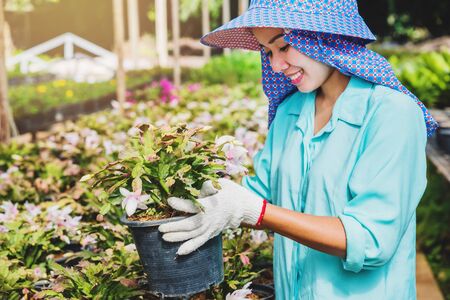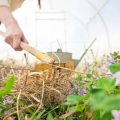Understanding Common Fungal Diseases in Backyard Gardens
Fungal diseases are a common challenge for many backyard gardeners across the United States. These issues can affect everything from juicy tomatoes and crisp cucumbers to beautiful roses and flowering shrubs. Knowing how to spot these problems early is the first step toward managing them organically.
What Are Fungal Diseases?
Fungal diseases are caused by various types of fungi that thrive in warm, moist conditions—something many parts of the U.S. experience during spring and summer. These fungi spread through spores carried by wind, water, insects, or even on your gardening tools.
Common Fungal Problems in American Home Gardens
Here’s a quick look at some of the most common fungal diseases you might encounter in your vegetable beds, fruit patches, or ornamental flowerbeds:
| Disease | Affected Plants | Visible Symptoms |
|---|---|---|
| Powdery Mildew | Zucchini, cucumbers, squash, roses, lilacs | White, powdery coating on leaves and stems; leaf curling or yellowing |
| Rust | Beans, hollyhocks, snapdragons | Orange or rusty spots on the underside of leaves; leaf drop |
| Blight (Early & Late) | Tomatoes, potatoes | Dark spots on leaves and stems; fruit rot; plant collapse |
Why Early Detection Matters
The sooner you catch signs of fungal disease, the better chance you have of stopping its spread naturally. Regularly inspecting your plants—especially after rain or watering—can help you catch symptoms before they get out of hand.
Tip:
Avoid overhead watering when possible, as wet foliage creates the perfect environment for fungi to grow. Instead, use drip irrigation or water at the base of plants early in the day so leaves dry quickly.
Know Your Regions Risks
Certain fungal issues are more common in specific parts of the country. For example:
- Southeast U.S.: High humidity makes powdery mildew and rust especially common.
- Northern states: Cool nights and morning dew can encourage blight development.
- West Coast: Coastal fog can lead to persistent mildew problems on ornamentals.
Coming Up Next:
In the next section, we’ll explore organic tools and strategies you can use to prevent these common fungal diseases naturally—without relying on synthetic chemicals.
2. Identifying Symptoms and Early Warning Signs
Fungal diseases can sneak up on your garden before you even realize theres a problem. Catching the early signs is key to stopping the spread and protecting your backyard plants using organic methods. Heres how to stay ahead of the game.
How to Spot Early Symptoms
Fungal infections often start small but can quickly take over if left untreated. Keep an eye out for these common symptoms:
| Symptom | Description | Common Fungal Disease |
|---|---|---|
| Yellowing Leaves | Leaves may turn yellow with or without brown edges or spots | Downy Mildew, Rust |
| Powdery Growth | A white, gray, or purple powder-like coating on leaves or stems | Powdery Mildew |
| Black Spots | Circular black or dark brown spots on foliage, often with yellow halos | Black Spot, Leaf Spot |
| Wilting Plants | Sudden drooping of leaves even with adequate watering | Fusarium Wilt, Verticillium Wilt |
| Moldy Soil Surface | Fuzzy or slimy mold visible on top of soil around plant base | Damping Off (seedlings), Root Rot |
Monitoring Your Garden Regularly
The best way to catch fungal issues early is by making a habit of checking your plants. Walk through your garden at least twice a week and look closely at leaves (top and bottom), stems, and soil. Use these quick tips:
- Inspect after rain: Fungi thrive in moist conditions, so check for changes right after wet weather.
- Look under leaves: Many fungal spores hide underneath where they’re less visible.
- Use a magnifying glass: For smaller spots or powdery patches, a closer look helps detect issues sooner.
- Create a garden journal: Jot down any unusual signs so you can track patterns over time.
Tip: Know Your Plants’ Norms
Understanding what healthy leaves and growth patterns look like for each type of plant in your garden makes it easier to recognize when something’s wrong. Some plants naturally have spots or variegated coloring, which can be confused with disease if you’re not familiar.
When in Doubt, Take a Sample
If youre unsure whether a symptom is fungal-related, clip off an affected leaf and bring it to your local extension office or nursery for help identifying the problem. You can also use online gardening forums or mobile apps that specialize in plant diagnostics.
By staying observant and acting quickly, you’ll give your organic solutions the best chance at controlling fungal problems before they get out of hand.

3. Cultural Practices to Prevent Fungal Growth
One of the best ways to keep fungal diseases out of your backyard garden is by practicing smart, organic-friendly gardening techniques. These methods focus on creating an environment where fungi cant easily thrive—mainly by reducing excess moisture and improving airflow around your plants.
Proper Plant Spacing
Giving your plants enough room to grow isnt just about aesthetics—its key to preventing fungal infections. When plants are packed too closely together, it creates a humid microclimate that fungi love. Proper spacing allows for better air circulation and helps leaves dry faster after rain or watering.
| Plant Type | Recommended Spacing |
|---|---|
| Tomatoes | 18–24 inches apart |
| Zucchini | 24–36 inches apart |
| Lettuce | 6–12 inches apart |
| Peppers | 18–24 inches apart |
Pruning for Better Airflow
Regular pruning helps prevent overcrowding and opens up space within the plant canopy. Removing dead or diseased leaves and stems also reduces places where fungal spores can settle and multiply. For vining crops like tomatoes or cucumbers, training them vertically with trellises also helps improve air movement.
Simple Pruning Tips:
- Use clean, sharp tools to avoid spreading disease.
- Focus on removing lower leaves that touch the soil.
- Trim off any yellowing or damaged foliage right away.
- Avoid pruning when plants are wet to reduce risk of spreading spores.
Watering Wisely
Overwatering or watering at the wrong time of day can contribute to fungal problems. The goal is to keep the soil moist without soaking the leaves. Using drip irrigation or soaker hoses instead of overhead sprinklers can help direct water where its needed—at the roots.
Best Watering Habits:
- Water early in the morning: This gives leaves time to dry during the day.
- Avoid evening watering: Wet foliage overnight encourages fungal growth.
- Check soil moisture before watering: Only water when the top inch feels dry.
- Add mulch around plants: Helps retain moisture in the soil and prevents splash-up of fungal spores.
By combining these cultural practices, youre not just growing healthier plants—youre building a natural defense system against common fungal issues in your backyard garden. Organic gardening is all about working with nature, and these simple habits make a big difference over time.
4. Natural and Homemade Fungicide Options
When it comes to protecting your backyard garden from fungal diseases, you dont always have to rely on harsh chemicals. There are several natural and organic fungicide options that are both effective and safe for your plants, your family, and the environment. Whether youre a fan of DIY remedies or prefer ready-to-use products approved for organic gardening, here are some trusted solutions you can count on.
Popular Organic Fungicide Sprays
These treatments are widely used by home gardeners across the U.S. for their effectiveness and ease of use. All of them are approved for organic gardening when used according to label instructions.
| Fungicide | Main Ingredient | Best For | How to Use |
|---|---|---|---|
| Neem Oil Spray | Neem oil (cold-pressed) | Powdery mildew, black spot, rust | Mix 2 tbsp neem oil with 1 gallon of water and a few drops of dish soap. Spray on affected plants weekly. |
| Baking Soda Solution | Baking soda (sodium bicarbonate) | Powdery mildew, early blight | Combine 1 tbsp baking soda, 1 tsp mild soap, and 1 gallon of water. Apply every 7–10 days. |
| Copper-Based Fungicide | Copper sulfate or copper octanoate | Late blight, leaf spot, downy mildew | Follow product label for dilution rate and apply during cool weather to avoid plant stress. |
DIY Recipes That Work
If you like a hands-on approach, these homemade sprays can be made with ingredients commonly found in your kitchen or local grocery store:
Baking Soda & Oil Spray
- Ingredients: 1 tbsp baking soda, 1 tbsp vegetable oil, 1 tsp mild dish soap, 1 gallon water
- Directions: Mix all ingredients thoroughly. Spray on leaves in early morning or late afternoon to prevent sunburn.
Milk Spray (for Powdery Mildew)
- Ingredients: 1 part milk (whole or skim), 2 parts water
- Directions: Shake well before use. Spray every 7 days at the first sign of infection.
Tips for Best Results
- Always test sprays on a small area of the plant first to ensure no sensitivity.
- Avoid applying in direct sunlight or during high heat to prevent leaf burn.
- Reapply after rain or heavy watering as most natural sprays wash off easily.
- Treat early—fungal infections are much easier to manage when caught early.
With these natural fungicide options, you can keep your garden healthy while staying true to organic practices. Try out different solutions to see what works best for your specific climate and plant types.
5. Encouraging Plant Immunity and Soil Health
One of the most effective ways to prevent fungal diseases in your backyard garden is by boosting your plants natural defenses and creating a healthy, balanced soil ecosystem. Organic practices like using compost, rotating crops, encouraging beneficial fungi, and pairing the right plants together can go a long way in keeping your garden thriving without chemicals.
Using Compost to Feed Your Soil
Compost is rich in organic matter and beneficial microbes that improve soil structure and support plant health. Healthy soil helps plants grow stronger roots and resist disease better. Spread a 1-2 inch layer of compost over your garden beds each season or mix it into the topsoil when planting.
Benefits of Compost:
| Benefit | How It Helps |
|---|---|
| Improves soil drainage | Reduces standing water that encourages fungal growth |
| Adds beneficial microbes | Competes with harmful fungi in the soil |
| Provides nutrients naturally | Keeps plants strong and less vulnerable to disease |
Crop Rotation for Disease Prevention
Planting the same crops in the same spot year after year can allow fungi to build up in the soil. Rotating your crops each season breaks this cycle. For example, if you planted tomatoes in one bed this year, try planting beans or leafy greens there next season.
Simple Crop Rotation Plan:
| Year | Bed A | Bed B | Bed C |
|---|---|---|---|
| Year 1 | Tomatoes (Nightshades) | Lettuce (Leafy Greens) | Beans (Legumes) |
| Year 2 | Beans (Legumes) | Tomatoes (Nightshades) | Lettuce (Leafy Greens) |
| Year 3 | Lettuce (Leafy Greens) | Beans (Legumes) | Tomatoes (Nightshades) |
The Power of Mycorrhizal Fungi
Mycorrhizal fungi form a symbiotic relationship with plant roots, extending their reach into the soil and helping them absorb more water and nutrients. These beneficial fungi also help protect roots from harmful pathogens, including many types of fungal diseases.
How to Add Mycorrhizae:
- Use mycorrhizal inoculants at planting time—available as powders or granules.
- Avoid synthetic fertilizers and fungicides that may harm beneficial fungi.
- Add compost or leaf mulch to encourage natural fungal activity.
Companion Planting for Natural Defense
Certain plant combinations can help deter pests and reduce fungal issues by improving airflow or releasing natural antifungal compounds into the soil. Companion planting also helps create a diverse ecosystem that supports overall garden health.
Popular Companion Plants for Fungal Resistance:
| Main Plant | Good Companion(s) | Benefit | ||||||||||||||||||||||||||||
|---|---|---|---|---|---|---|---|---|---|---|---|---|---|---|---|---|---|---|---|---|---|---|---|---|---|---|---|---|---|---|
| Tomatoes | Basil, Marigold | Basil repels fungal spores; marigolds fight soil pathogens | ||||||||||||||||||||||||||||
| Cucumbers | Dill, Nasturtium | Nasturtium improves airflow; dill attracts helpful insects | ||||||||||||||||||||||||||||
| Cabbage family (Brassicas) | 6. When to Take Action: Organic Intervention Timing Strategies
| Stage | What Happens | Best Organic Action |
|---|---|---|
| Spore Germination | Fungal spores land on plant surfaces and begin to grow under moist conditions. | Apply preventative sprays like neem oil or compost tea. |
| Early Infection | The fungus starts invading plant tissues but symptoms are not yet visible. | Use sulfur-based fungicides or baking soda solutions to stop progression. |
| Visible Symptoms | You see spots, powdery growth, or wilting on leaves and stems. | Remove affected areas and reapply organic treatment; improve air circulation. |
| Reproduction | The fungus produces more spores to spread the disease further. | Clean tools and remove infected debris to prevent spreading. |
Timing by Plant Growth Stage
Certain times in a plants life are more vulnerable to fungal problems. Here’s how to align your actions with plant development:
| Plant Stage | Risk Level | Recommended Action |
|---|---|---|
| Seedling Stage | High (due to damping-off) | Mist with chamomile tea or cinnamon solution regularly. |
| Vegetative Growth | Moderate (foliar diseases may appear) | Apply compost tea biweekly; keep foliage dry. |
| Budding & Flowering | High (humidity increases risk) | Ensure airflow; use sulfur dust or neem spray proactively. |
| Fruit Set & Maturity | Moderate (fruit rot possible) | Avoid overhead watering; mulch properly; inspect daily for signs of rot. |
Watch the Weather
Warm, humid, or rainy conditions create the perfect storm for fungal diseases. If your local forecast predicts several days of moisture, preemptively treat plants with organic fungicides like potassium bicarbonate or copper soap. Always apply in the early morning or late afternoon to avoid leaf burn.
Create a Regular Schedule
A consistent prevention routine works better than reacting after the problem appears. Try this simple weekly checklist during the growing season:
- Monday: Inspect leaves for discoloration or powdery residue.
- Wednesday: Apply foliar sprays if weather has been humid or rainy.
- Friday: Remove any diseased leaves and clean garden tools thoroughly.
Tuning your organic strategy to both the plant’s needs and fungal behavior can save your crops without harming beneficial insects or soil health. Being proactive—not reactive—is the key to success in an eco-friendly garden.


